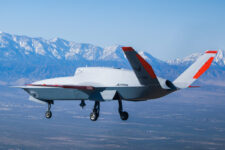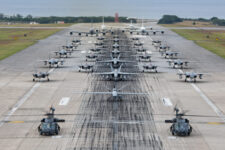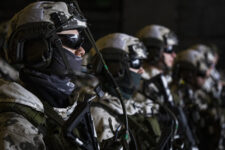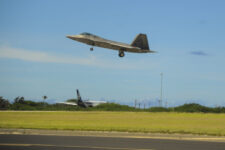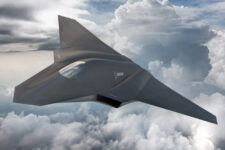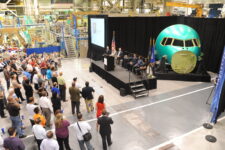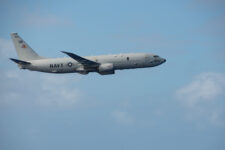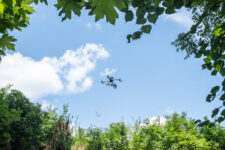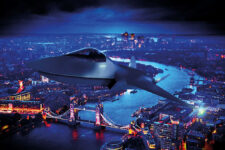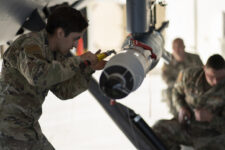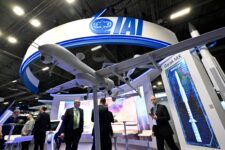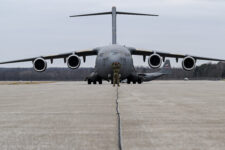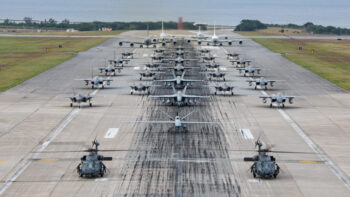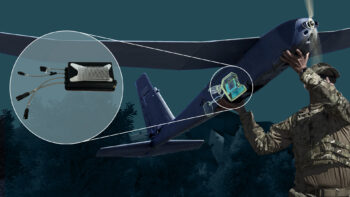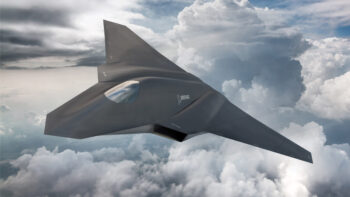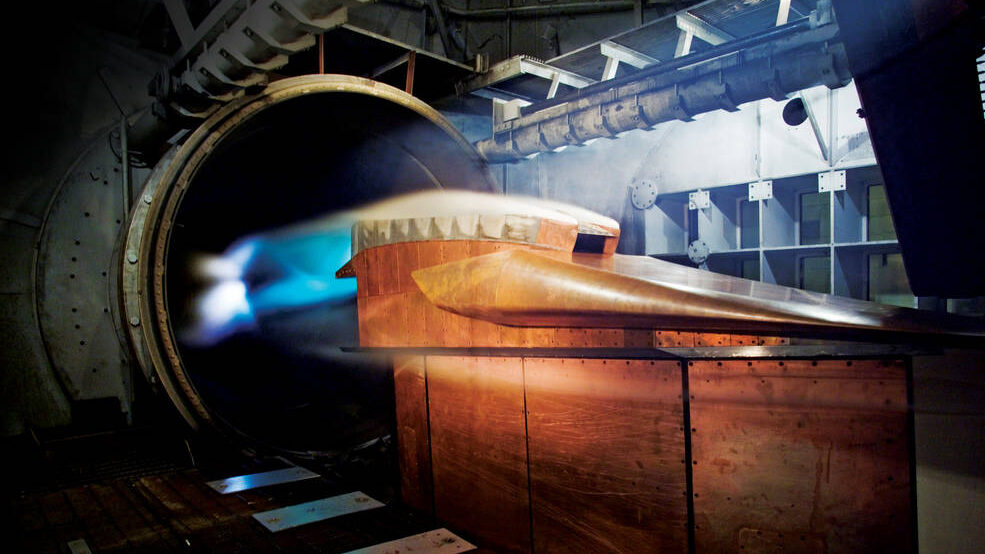
Hypersonic model test in the 8-Foot High Temperature Tunnel at NASA Langley. (NASA)
WASHINGTON — While various arms of the Pentagon are working on hypersonic prototypes that are years away from actual test flights, the department’s Defense Innovation Unit is betting that the development of an actual hypersonic test aircraft can help speed development and lower costs of new weapon systems — while reducing reliance on the few capable wind tunnels currently available.
DIU also hopes to overcome the shortfalls of current land- and sea-based flight test ranges that cannot support rapid turnaround testing, resulting in long lag times in development.
“[C]urrent land and sea-based test ranges are optimized for low-cadence and operationally-representative tests that replicate the trajectory and velocity of the hypersonic weapon system. The slow pace of hypersonic research and development has resulted in more expensive and less effective products,” DIU’s website explains.
Under the new Hypersonic and High-Cadence Airborne Testing Capabilities (HyCAT) initiative, DIU is seeking commercial partners to demonstrate within 12 to 24 months a test aircraft prototype that can fly and maneuver at greater than Mach 5, can carry two experimental payloads, undertake “long-endurance” flights, and capture in-flight performance data. Interested contractors have until Sept. 16 to make a pitch.
Getting a hypersonic jet actually flying, as opposed to doing ground testing, may require greater risk. But that’s firmly in line with DIU’s ethos, and it comes with the benefit of not needing to take up a spot in the few wind tunnels capable of handling hypersonic tests.
“The lack of hypersonic wind tunnels is an issue, and the few facilities we have are booked. If we can get the cost of in-air flight testing down, we might be able to short-cut the bottleneck and get the data we need from actual flight testing,” a DIU spokesperson told Breaking Defense.
While several universities are rushing to build new testing facilities — such as Purdue in Indiana, where Deputy Defense Secretary Kathleen Hicks in August visited the Hypersonics and Applied Research Facility, which soon will be home to two wind tunnels — there just aren’t that many on US soil capable of Mach 5+ testing.
In addition, current infrastructure is aging. A March 2021 report [PDF] by the Governmental Accounting Office found that of the 26 DoD, NASA and Energy Department wind tunnels capable of supporting hypersonic research, 14 were built in the 1970s.
“We want to provide a modular, rapid testing capability that any joint partner could adapt for their own use. Transition for this initiative will depend on what type of responses we get from industry,” the DIU spokesperson said.
And while it may seem odd that DIU is seeking commercial expertise, since much of the US research in hypersonics has been for NASA or military purposes, the agency’s spokesperson explained that there actually is growing interest in the commercial world.
“Things are changing, there are now a healthy number of companies looking at commercial applications of hypersonics!,” they said.
A key requirement is the ability for the experimental aircraft not only to be “recoverable and reusable,” but to get back in the air quickly after a test flight. The DIU solicitation notes interest in an aircraft that can “turnaround to a second subsequent test within 60 days.” But the spokesperson said the ultimate goal is a much higher flight cadence.
“Eventually, we’d like to be testing weekly. This allows for more rapid evaluation of new tech, design iteration, etc,” the spokesperson said.
According to DIU’s Sept. 1 solicitation, other “capabilities of interest” that may give competitors an edge are:
- Three-minute minimum flight in a relevant hypersonic test environment with near-constant flight conditions, of at least 1,000 pounds-per-square foot dynamic pressure.
- Capable of being certified to operate in the US or allied flight test ranges under existing flight test safety regulations.
- Total experimental payload capacity of at least 20 pounds with accommodation for payload electrical power.
Interestingly, despite the veil of secrecy that usually accompanies Defense Department hypersonics research, DIU has opened the solicitation to international vendors. This no doubt is related to the fact that DoD increasingly has been seeking allied partners for systems development and access to wind tunnels and other testing facilities, such as flight ranges.
For example, Australia and the United States are developing and testing hypersonic cruise missile prototypes under the Southern Cross Integrated Flight Research Experiment (SCIFiRE), and the Australian defense minister in January presided over the opening of a new test facility in Brisbane.
Air Force requests more money for drone wingmen effort
A reprogramming request recently submitted to Capitol Hill by the Pentagon asks for permission to shift an additional $150 million into the Air Force’s Collaborative Combat Aircraft program, a budget increase of nearly 40 percent.
